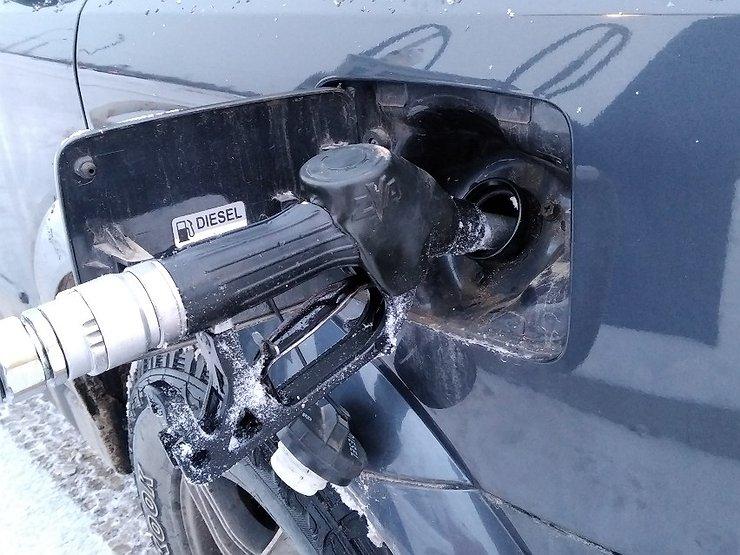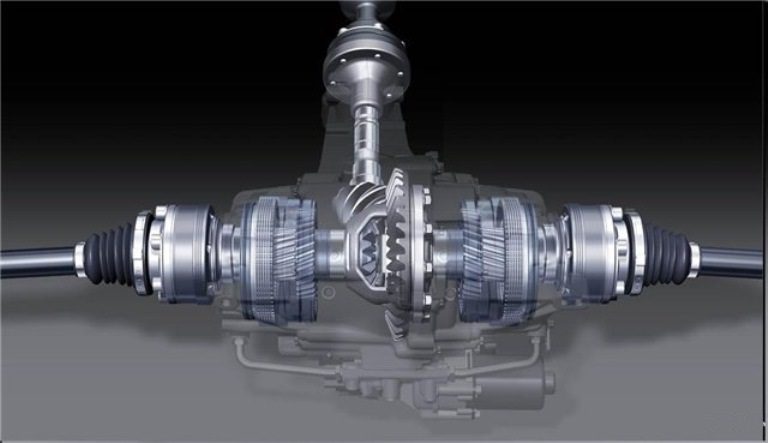
Thorsen: generations, devices and principle of operation
Content
In the process of movement of the car, a very different effect is exerted on its wheels, starting from the torque that comes from the engine through the transmission, and ending with the difference in revolutions when the vehicle overcomes a sharp turn. In modern cars, a differential is used to eliminate the difference in wheel rotation on one axle.
We will not consider in detail what it is and what its principle of operation is - there is A separate article... In this review, we will consider one of the most famous types of mechanisms - Torsen. Let's discuss what its peculiarity is, how it works, in which cars it is installed, as well as what kinds of it exist. This mechanism was especially popular thanks to its introduction into SUVs and all-wheel drive car models.
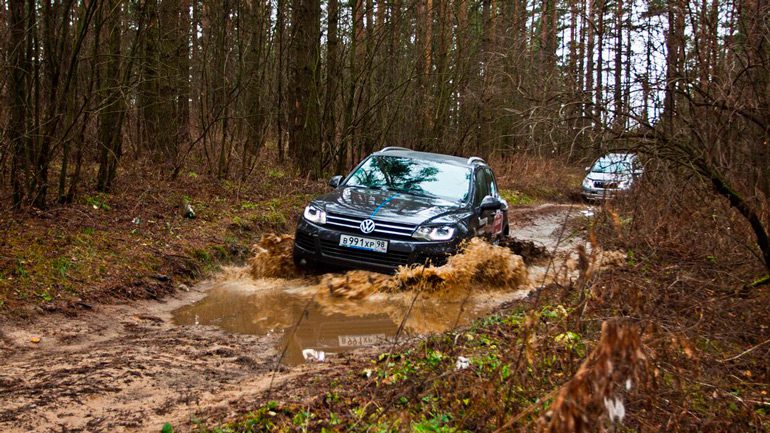
In many of their models of four-wheel drive vehicles, automakers install different systems that distribute torque along the axles of the car. For example, for BMW, this is xDrive (read about this development here), Mercedes-Benz - 4Matic (what its peculiarity is, it is described separately) etc. Often a differential with an automatic locking is included in the device of such systems.
What is Torsen Differential
The Torsen differential is one of the modifications of mechanisms that have a worm gearing type and a high degree of friction. Similar devices are used in various vehicle systems in which the torque force is distributed from the driving axle to the driven axle. The device is mounted on the drive wheel, which prevents premature tire wear when the car travels on a winding road.
Also, similar mechanisms are installed between two axles in order to take power from the power unit to the secondary axle, making it the leading one. In many modern models of off-road vehicles, the center differential is replaced by a multi-plate friction clutch (its structure, modifications and operating principle are considered in another article).
The name Thorsen literally translates from English as "torque sensitive". This type of device is capable of self-locking. Due to this, the self-locking element does not need additional devices that level the functioning of the mechanism under consideration. This process will occur when the driving and driven shafts have different rpm or torque.
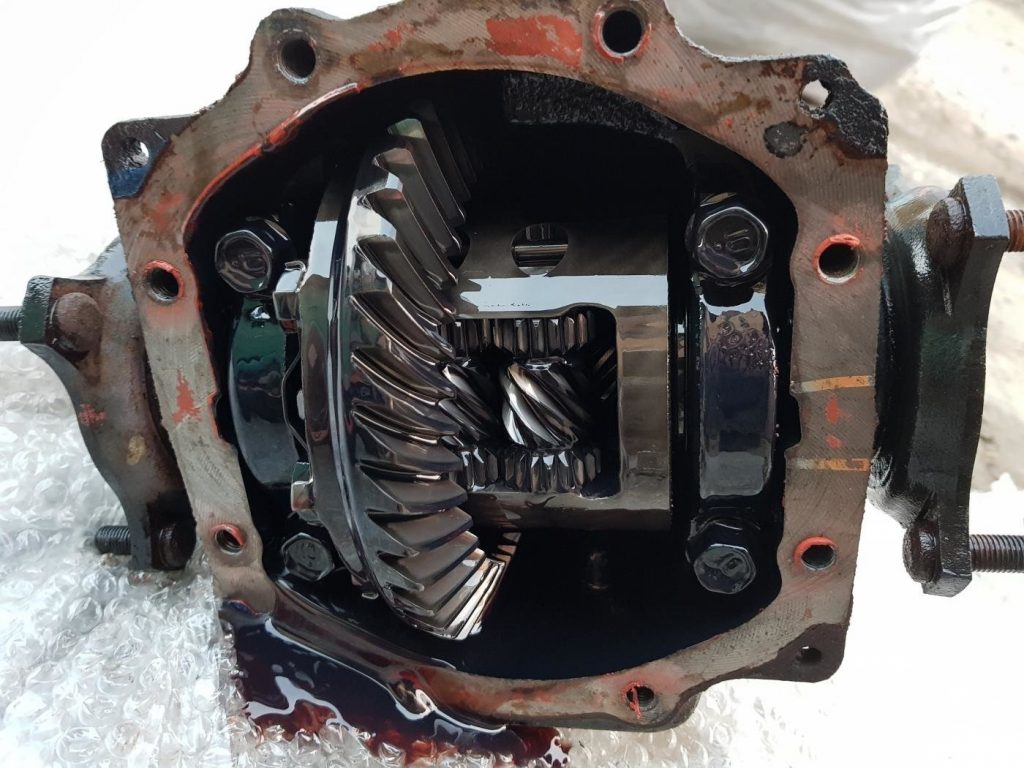
The design of self-locking mechanisms implies the presence of worm gears (driven and leading). In the circles of motorists, you can hear the name satellite or semi-axial. These are all synonyms for the worm gears used in this mechanism. The worm gear has one feature - it does not need to transmit rotational movements from adjacent gears. On the contrary, this part can independently twist the adjacent gear elements. This provides a partial differential lock.
appointment
So, the purpose of the Torsen differential is to provide efficient power take-off and torque distribution between the two mechanisms. If the device is used in driving wheels, then it is necessary so that when one wheel slips, the second does not lose torque, but continues to work, providing traction with the road surface. The center differential has a similar task - when the wheels of the main axle slip, it is able to block and transfer part of the power to the secondary axle.
In some modern cars, automakers may use a differential modification that independently locks a suspended wheel. Thanks to this, the maximum power is not delivered to the trailing axle, but to the one with good traction. This component of the transmission is ideal if the machine often conquers off-road conditions.
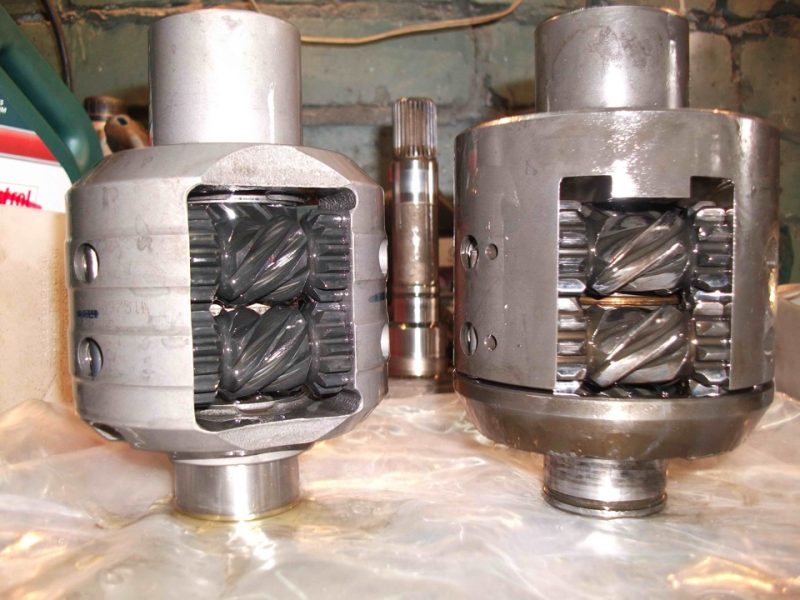
Its location depends on what kind of transmission the car has:
- Front wheel drive car. In this case, the differential will be in the gearbox housing;
- Rear wheel drive car. In this arrangement, the differential will be installed in the axle housing of the driving axle;
- Four-wheel drive vehicles. In this case, the differential (if the multi-disc center clutch is not used as its counterpart) will be installed in the axle housing of the front and rear axles. It transmits torque to all wheels. If the device is installed in a transfer case, then it will provide power take-off by the drive axles (for more details on what a transfer case is, read in another review).
History of creation
Before this device appeared, drivers of self-propelled motor vehicles observed a decrease in the controllability of the crew when it was overcoming a bend at speed. At this moment, all wheels, which are rigidly connected to each other through a common axle, have the same angular velocity. Because of this effect, one of the wheels loses contact with the road surface (the engine makes it spin at the same speed, and the road surface prevents it), which accelerated tire wear.
To solve this problem, engineers developing the next modifications of cars drew attention to the device, which was created by the French inventor O. Pecker. It had shafts and gears in its design. The work of the mechanism was to ensure that the torque is transmitted from the steam engine to the driving wheels.
Although in many cases the transport became more stable when cornering, but with the help of this device it was impossible to completely eliminate wheel slip at different angular speeds. This drawback was especially manifested when the car fell on a slippery road surface (ice or mud).
Since the vehicles still remained unstable when cornering on poorly paved roads, this often led to road accidents. That changed when designer Ferdinand Porsche created a cam mechanism that prevented the drive wheels from slipping. This mechanical element has found its way into the transmissions of many Volkswagen models.
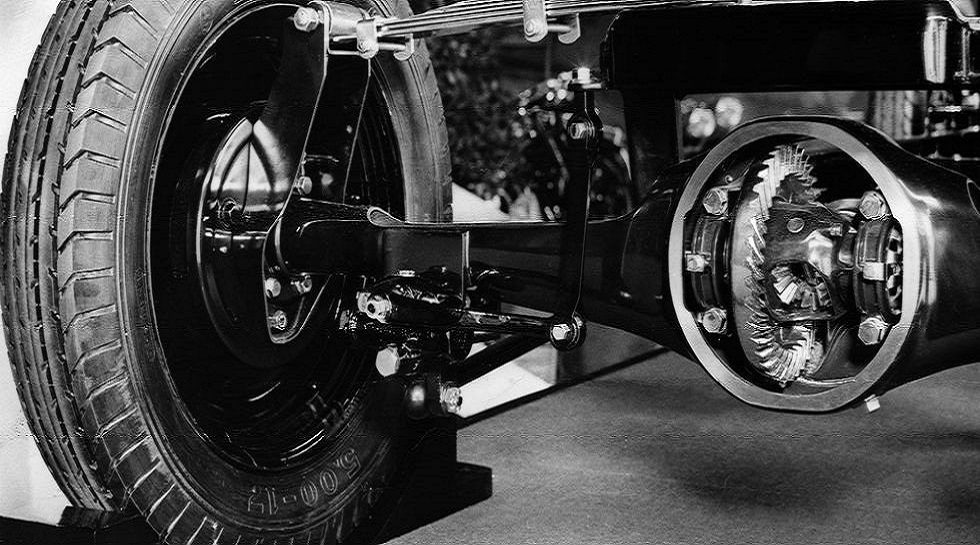
The differential with a self-locking device was developed by the American engineer V. Glizman. The mechanism was created in 1958. The invention was patented by Torsen and still bears this name. Although the device itself was initially quite effective, over time, several modifications or generations of this mechanism have appeared. What is the difference between them, we will consider a little later. Now we will focus on the principle of operation of the Thorsen differential.
Principle of operation
Most often, the Thorsen mechanism is found in those car models in which power take-off can be carried out not only on a separate axle, but even on a separate wheel. Often, a self-locking differential is also installed on front-wheel drive car models.
The mechanism works according to the following principle. The transmission transmits rotation to a specific wheel or axle through a differential. In early car models, the mechanism was able to change the amount of torque in a ratio of 50/50 percent (1/1). Modern modifications are able to redistribute the rotational force up to a ratio of 7/1. This allows the driver to control the vehicle even if only one wheel has good traction.
When the speed of the skid wheel jumps sharply, the worm-type gear of the mechanism is locked. As a result, the forces are directed to a certain extent on the more stable wheel. The skid wheel in the latest car models almost loses torque, which prevents the car from skidding or if the car is stuck in mud / snow.
The self-locking differential can be installed not only on foreign cars. Often this mechanism can be found on domestic rear- or front-wheel drive car models. In this version, the car, of course, does not become an all-terrain vehicle, but if slightly enlarged wheels are used in it, and the ground clearance is high (for more details about this parameter, see in another review), then in combination with the Torsen differential, the transmission will allow the vehicle to cope with moderate off-road conditions.
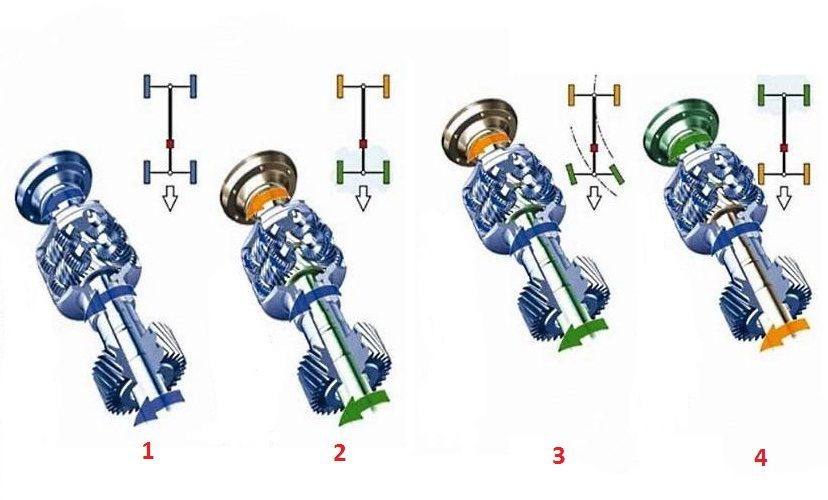
2) The front axle is on ice: the front / rear torque ratio can reach 1 / 3.5; the front wheels spin at a higher speed;
3) The car enters the corner: the torque distribution can reach 3.5 / 1 (front / rear wheels), the front wheels rotate faster;
4) Rear wheels are on ice: torque ratio can reach 3.5 / 1 (front / rear axle), rear wheels spin faster.
Consider the work of the cross-axle differential. The whole process can be divided into several stages:
- The gearbox transmits torque to the driven gear through the main drive shaft;
- The driven gear takes over the rotation. The so-called carrier or cup is fixed on it. These parts rotate with the driven gear;
- As the cup and gear rotate, rotation is transmitted to the satellites;
- The axle shafts of each of the wheels are fixed to the satellites. Together with these elements, the corresponding wheel also turns;
- When the rotational force is equally applied to the differential, the satellites will not rotate. In this case, only the driven gear rotates. The satellites remain stationary in the cup. Thanks to this, the force from the gearbox is distributed in half to each axle shaft;
- When the car enters a turn, the wheel on the outside of the semicircle makes more revolutions than the one on the inside of the semicircle. For this reason, in vehicles with rigidly connected wheels on one axle, there is a loss of contact with the road surface, since resistance of a different magnitude is created on each side. This effect is eliminated by the movement of the satellites. In addition to the fact that they rotate with the cup, these components begin to rotate around their axis. The peculiarity of the device of these elements is that their teeth are made in the form of cones. When the satellites rotate around their axis, the speed of rotation of one wheel increases and the other decreases. Depending on the difference in resistance to the wheels, the redistribution of torque in some cars can reach a ratio of 100/0 percent (that is, the rotational force is transmitted only to one wheel, and the second simply rotates freely);
- The conventional differential is designed to accommodate the difference in rotational speed between the two wheels. But this feature is also a disadvantage of the mechanism. For example, when the car gets into mud, the driver tries to get out of the difficult section of the road by increasing the speed of rotation of the wheels. But due to the operation of the differential, the torque follows the path of least resistance. For this reason, the wheel remains motionless on a stable section of the road, and the suspended wheel rotates at maximum speed. To eliminate this effect, you just need a differential lock (this process is described in detail in another review). Without a locking mechanism, the car often stops when at least one wheel starts to slip.
Let's take a closer look at how the Torsen differential works in three different driving modes.
With straight motion
As we have already noted above, when the car moves along a straight section of the road, half of the torque is received on each drive axle shaft. For this reason, the drive wheels rotate at the same speed. In this mode, the mechanism resembles a rigid coupling of two driving wheels.
The satellites are at rest - they just rotate with the mechanism cup. Regardless of the type of differential (locking or free), in such driving conditions, the mechanism will behave the same, since both wheels are on the same surface and face the same resistance.
When turning
The wheel of the inner semicircle makes fewer movements during the bend than the one on the outside of the bend. In this case, the work of the differential is manifested. This is the standard mode in which mechanisms are triggered to compensate for the difference in the revolutions of the driving wheels.
When the car finds itself in such conditions (and this happens often, since this type of transport does not move along a pre-laid track, like a train), the satellites begin to turn around their own axis. In this case, the connection with the body of the mechanism and the gears of the axle shafts is not lost.

Since the wheels do not lose traction (friction occurs between tires and the road equally), torque continues to flow to the device in the same proportion of 50 to 50 percent. This design is special in that at different speeds of rotation of the wheels, the wheel, which rotates faster, requires more power compared to the second, which operates at lower speeds.
Thanks to this leveling of the device's operation, the resistance that is applied to the spinning wheel is eliminated. In models with a rigid coupling of the driving axles, this effect cannot be eliminated.
When slipping
The quality of the free differential decreases when one of the wheels of the car starts to slip. This happens, for example, when a vehicle hits a muddy dirt road or a partially icy road section. Since the road ceases to resist the rotation of the semi-axle, power is taken off to the free wheel. Naturally, traction in such a situation also disappears (one wheel, which is on a stable surface, remains stationary).
If free symmetric differentials are installed in the machine, then Newtons / meters in this case are distributed only in equal proportions. Therefore, if traction disappears on one wheel (its free rotation begins), the second automatically loses it. The wheels stop clinging to the road and the car slows down. In the event of a stop on ice or in mud, the vehicle will not be able to move from its place, since the wheels immediately break into slipping when starting off (depending on the condition of the road).
This is precisely the key disadvantage of free differentials. When traction is lost, all the power of the internal combustion engine goes to the suspended wheel, and it just turns uselessly. The Thorsen mechanism eliminates this effect by locking when traction is lost on a wheel with stable traction.
Device and main components
The Torsen modification design consists of:
- Shells or cups... This element receives Newtons / meters from the final drive shaft (driven gear mounted in a cup). There are two semi-axles in the body, to which the satellites are connected;
- Semi-axial gears (also called sun gear)... Each of them is designed for the semi-axle of its wheel, and transmits rotation through the splines on them and the axles / semi-axles;
- Right and left satellites... On the one hand, they are connected to the semi-axial gears, and on the other, to the body of the mechanism. The manufacturer decided to place 4 satellites in the Thorsen differentials;
- Output shafts.
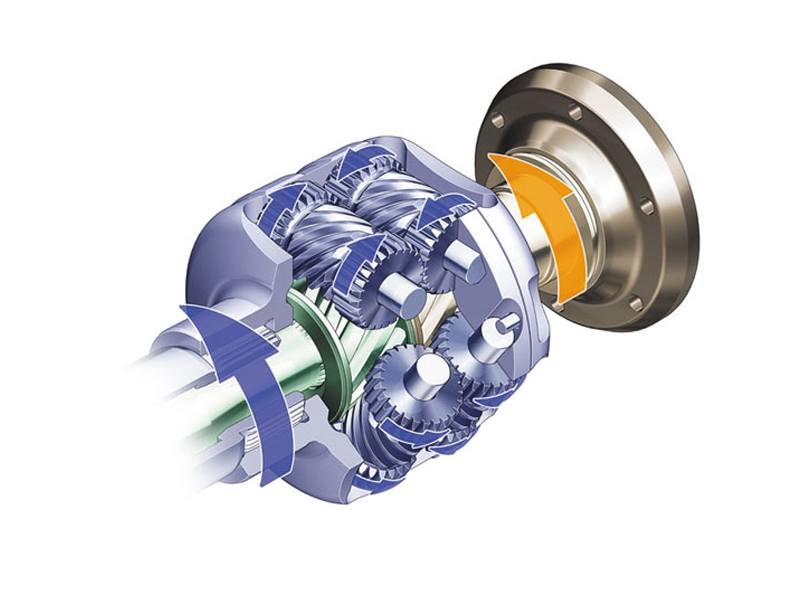
Self-locking Thorsen differentials are the most advanced type of mechanism that provides a redistribution of torque between the axle shafts, but at the same time prevents the useless rotation of the suspended wheel. Such modifications are used in the Quattro all-wheel drive from Audi, as well as in models from well-known automakers.
Types of self-locking differential Thorsen
Designers developing modifications to Thorsen differentials have created three types of these mechanisms. They differ from each other in their design, and are intended for use in specific vehicle systems.
All device models are marked with T marker. Depending on the type, the differential will have its own layout and shape of the executive parts. This, in turn, affects the efficiency of the mechanism. If placed in the wrong assembly, parts will quickly fail. For this reason, each unit or system relies on its own differential.
This is what each type of Torsen differential is for:
- T1... It is used as a cross-axle differential, but it can be installed to redistribute the moment between the axles. Has a small degree of blocking and sets later than the next modification;
- T2... Installed between the drive wheels, as well as in the transfer case if the vehicle is equipped with four-wheel drive. Compared to the previous version, the blocking of the mechanism occurs a little earlier. This type of device is more often used on civilian car models. There is also a T2R modification in this category. The parts of this mechanism are capable of withstanding much more torque. For this reason, it is only installed on powerful cars.
- T3... Compared to the previous versions, this type of device is smaller. The design feature allows you to change the power take-off ratio between the nodes. For this reason, this product is only installed in a transfer case between the axles. In an all-wheel drive equipped with a Torsen differential, the distribution of torque along the axles will vary depending on the road conditions.
Each type of mechanism is also called a generation. Consider the design features of each of them.
Generations of Torsen Differential
The principle of operation and the device of the first generation (T1) was discussed earlier. In the design, worm gears are represented by satellites and gears connected to the driving axle shafts. The satellites mesh with the gears using helical teeth, and their axis is perpendicular to each axle shaft. The satellites are engaged with each other by straight teeth.
This mechanism allows the drive wheels to rotate at their own speed, which eliminates drag when cornering. At the moment when one of the wheels starts to slip, the worm pair is wedged, and the mechanism tries to transfer more torque to the other wheel. This modification is the most powerful, and therefore it is often used in special vehicles. It is capable of transmitting a high rate of torque and has a high rate of frictional force.
The second generation of Thorsen differentials (T2) differs from the previous modification in the arrangement of the satellites. Their axis is located not perpendicularly, but along the semiaxes. Special notches (pockets) are made in the body of the mechanism. They have satellites installed. When the mechanism is unlocked, paired satellites are triggered, which have oblique teeth. This modification is characterized by a lower friction force, and the blocking of the mechanism occurs earlier. As mentioned earlier, this generation has a more powerful version that is used on vehicles with a high performance engine.

Structurally, this modification differs from the standard analogue in the type of engagement. The design of the mechanism has a splined coupling, on the outside of which there are helical teeth. This clutch engages the sun gear. Depending on the road conditions, this structure has a variable index of the friction force between the engaging components.
As for the third generation (T3), this mechanism has a planetary structure. The drive gear is installed parallel to the satellites (they have helical teeth). The semi-axle gears have an oblique arrangement of teeth.
In their models, each manufacturer uses these generations of mechanisms in their own way. First of all, it depends on what characteristics the car should have, for example, whether it needs a plug-in all-wheel drive or the distribution of torque separately for each wheel. For this reason, before purchasing a vehicle, it is necessary to clarify what modification of the differential the automaker uses in this case, as well as how it can be operated.
Differential lock Thorsen
Usually the self-locking mechanism works like a standard differential - it eliminates the difference in the rpm of the driven wheels. The device is blocked only in emergency situations. An example of such circumstances is slipping of one of them on an unstable surface (ice or mud). The same applies to blocking the interaxle mechanism. This feature allows the driver to get out of difficult road sections without assistance.
When a blockage occurs, excess torque (the suspended wheel is spinning uselessly) is redistributed to the wheel that has the best grip (this parameter is determined by the resistance to rotation of this wheel). The same process occurs with inter-axle blocking. The suspended axle gets less Newtons / meters, and the one with the best grip starts to work.
What cars is the Thorsen differential on
The considered modification of self-locking mechanisms is actively used by world-famous car manufacturers. This list includes:
- Honda;
- Toyota;
- Subaru;
- Audi;
- Alfa Romeo;
- General Motors (in almost all Hummer models).

And this is not the whole list. Most often, an all-wheel drive car is equipped with a self-locking differential. It is necessary to check with the seller about its availability, because the transmission that transmits torque to both axles is not always equipped with this mechanism by default. For example, instead of this device, a multi-plate friction or viscous clutch can be installed.
Also, this mechanism is more likely to be installed on a car with sporty characteristics, even if it is a front or rear wheel drive model. A standard front wheel drive car is not equipped with a differential lock, as such a car will require some sporty driving skills.
Advantages and disadvantages
So, the Thorsen type differential is designed to help the driver overcome difficult road sections without anyone's help. In addition to this advantage, the device has several more advantages:
- It always works with maximum accuracy in an emergency;
- Provides smooth operation of the transmission on unstable road surfaces;
- In the process of work, it does not emit extraneous noise, because of which comfort during the trip would suffer (provided that the mechanism is in good order);
- The design of the device completely frees the driver from the need to control the process of redistribution of torque between the axles or individual wheels. Even if there are several transmission modes in the on-board system of the vehicle, the blocking itself occurs automatically;
- The process of torque redistribution does not affect the efficiency of the braking system;
- If the driver operates the vehicle in accordance with the manufacturer's recommendations, the differential mechanism does not require any special maintenance. An exception is the need to monitor the lubricant level in the transmission crankcase, as well as the need for an oil change (the replacement interval is indicated by the vehicle manufacturer);
- When installed on a car with front-wheel drive, the mechanism makes it easier to start the vehicle (the main thing is to avoid the breakdown of the driving wheels), and also makes the reaction to the driver's actions in turns clearer.
Despite the fact that this mechanism has many positive aspects, it is not devoid of disadvantages. Among them:
- The high price of the device. The reason for this is the complexity of the production and assembly of the structure;
- Due to the fact that an additional unit appears in the transmission, in which a small resistance (friction between the gears) is formed, a machine equipped with a similar mechanism will require more fuel. Under certain conditions, the car will be more voracious than its counterpart, which has only one drive axle;
- Low efficiency;
- There is a high probability of a wedge of parts, since there are a large number of gear components in its device (this often happens due to poor product quality or due to untimely maintenance);
- During operation, the mechanism heats up very much, therefore, a special lubricant is used for the transmission, which does not deteriorate under high temperature conditions;
- Loaded components are subject to severe wear (depends on the frequency of the lock actuation and the driving style used by the driver in the process of overcoming off-road);
- Operation of the car on one of the wheels, which differs from the others, is undesirable, since this difference loads the mechanism, which leads to accelerated wear of some of its parts.
The modernization of a front-wheel drive vehicle deserves special attention (the free differential is replaced with a self-block). Despite the fact that the car becomes more agile when cornering, at the moment of intensive acceleration, the car is sensitive to the road surface. At this moment, the car becomes "nervous", it is pulled onto a loose surface, and the driver needs more concentration and more active steering. Compared to the factory equipment, this modification is less comfortable on long trips.
When it comes to emergencies, such a car is less obedient and not as predictable as the factory version. Those who have decided on such a modernization have learned from their own experience that these changes allow the application of sports driving skills. But if they are not there, then you should not subject the car to such improvements. Their effect will only be useful in sport mode or on muddy country roads.
In addition, the motorist, in addition to installing a self-locking mechanism, must correctly adjust other parameters of the car in order to feel the sharpness of driving. For the rest, the car will behave like an SUV, which is not necessary in the conditions in which this transport is more often used.
At the end of the review, we offer an additional video about the work of the Thorsen self-locking differential and the history of its creation:
Questions and answers:
How does a Torsen differential work? The mechanism senses the moment when one of the wheels loses traction, due to the difference in torque, the differential gears engage, and one wheel becomes the main one.
How does a Torsen differential differ from a conventional differential? A conventional differential provides an even distribution of traction to both wheels. When one wheel slips, traction disappears on the second. Thorsen, when slipping, redirects the torque to the loaded axle shaft.
Where is Torsen used? Cross-axle self-locking differential, as well as an inter-axle mechanism that connects the second axle. This differential is widely used in all-wheel drive vehicles.

